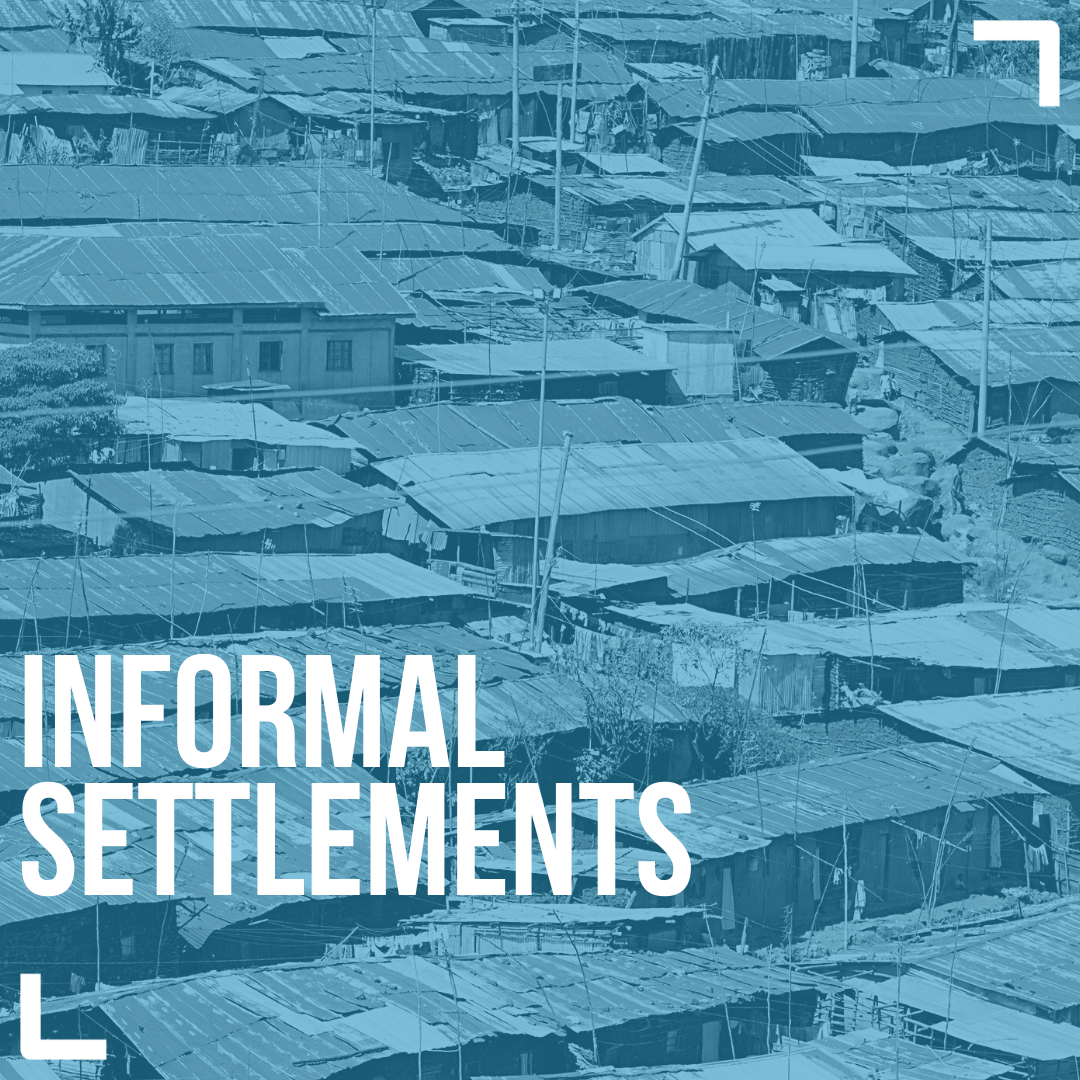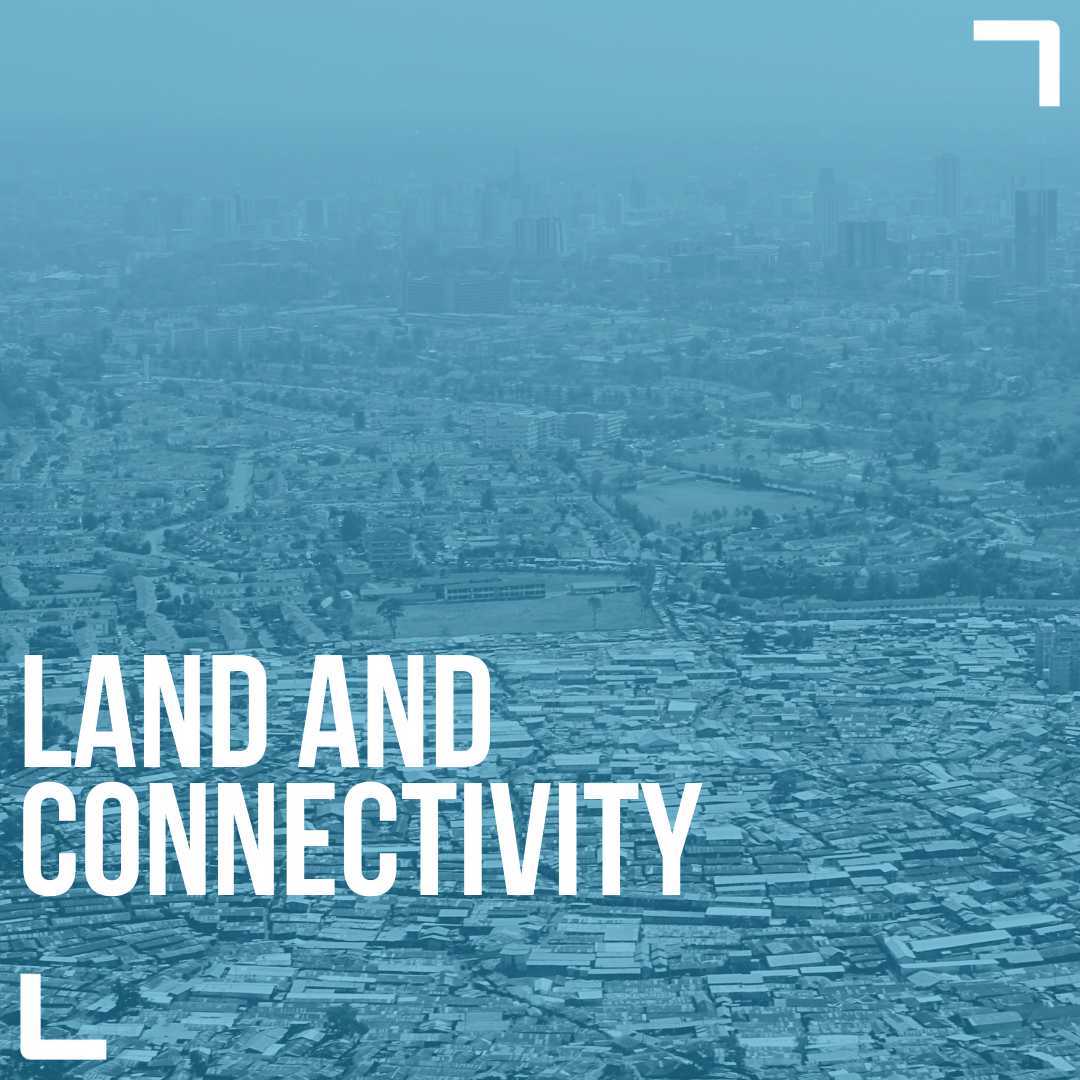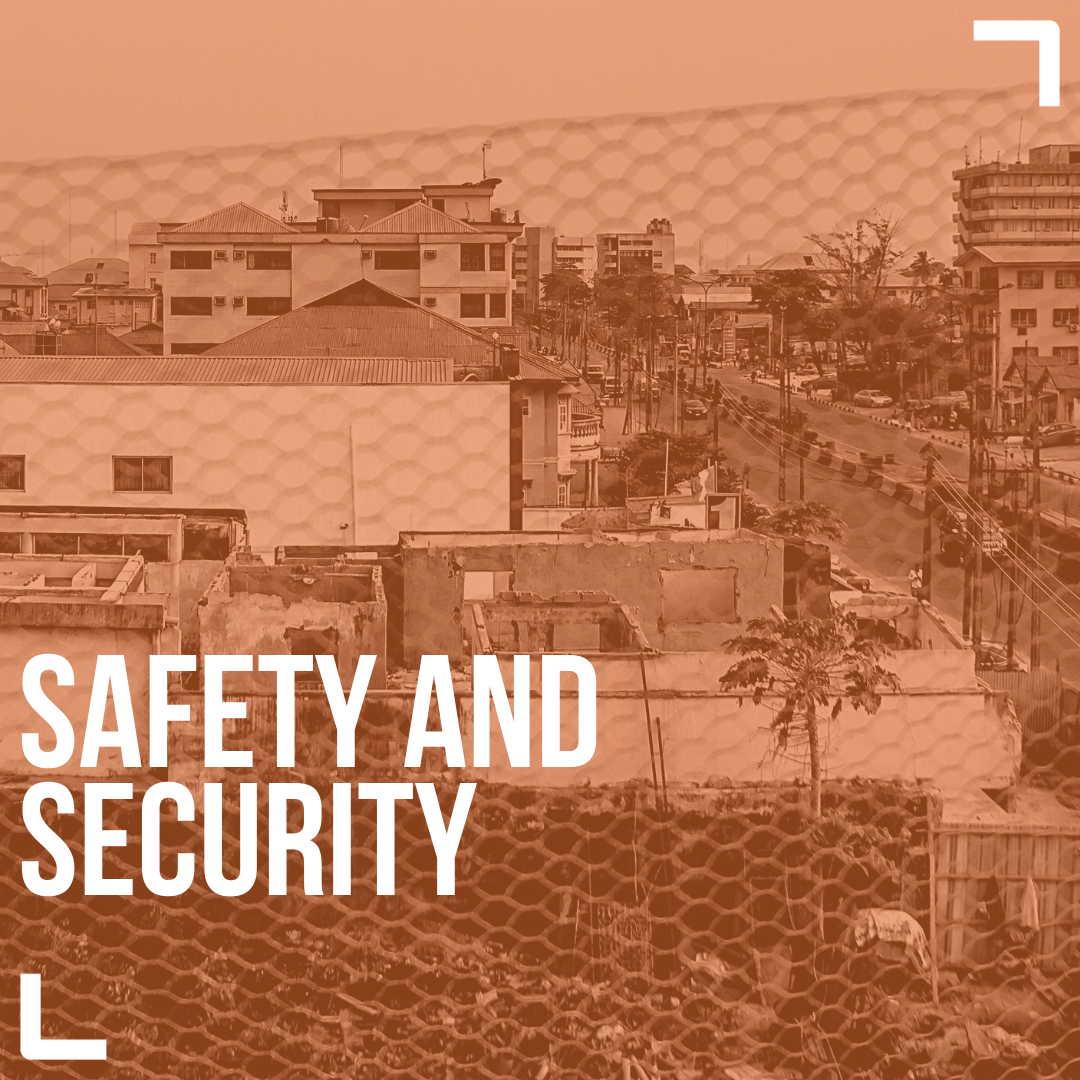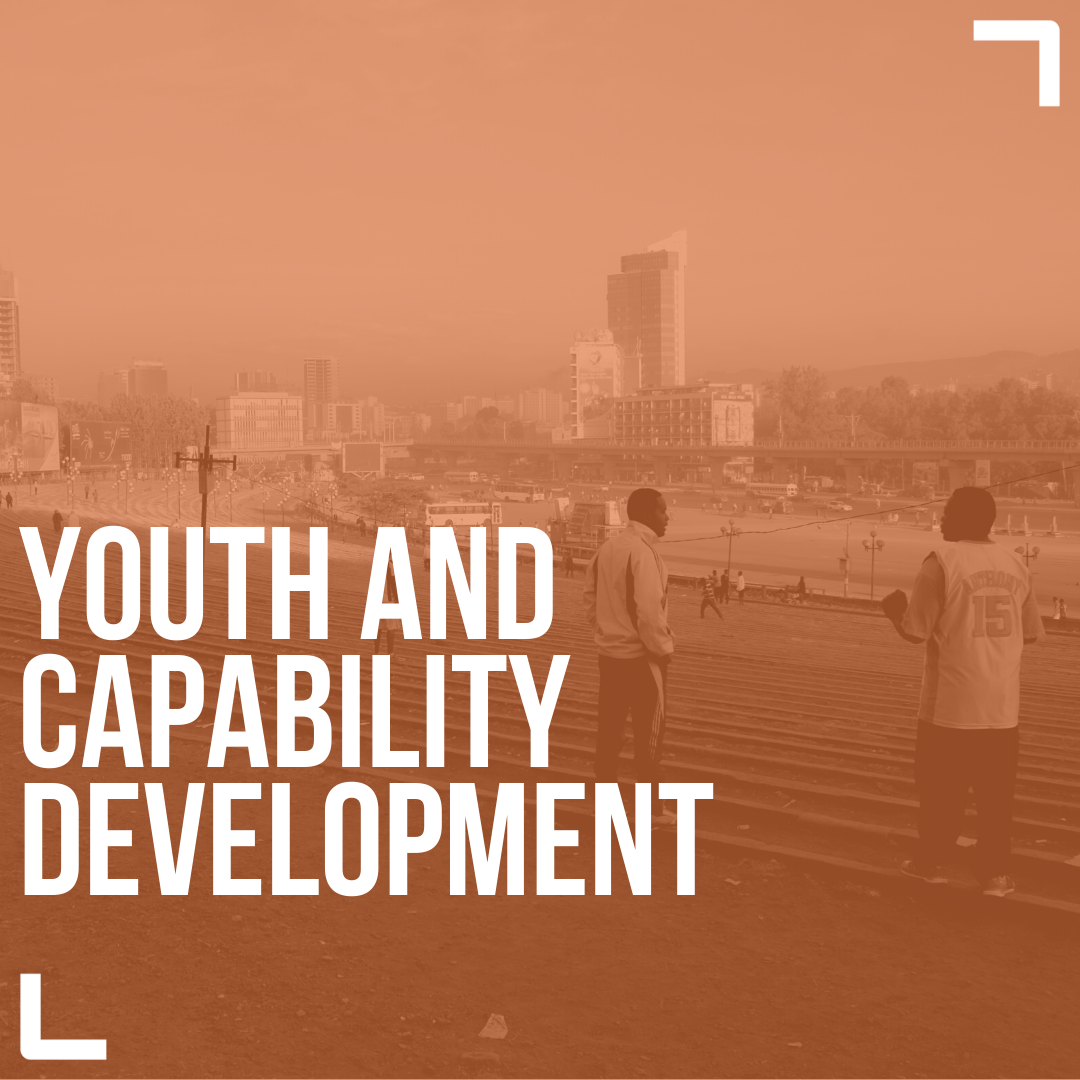Mogadishu
Mogadishu is Somalia’s capital city and largest port, with population estimates ranging from 1.7 million to 2.9 million.

A fragile city, Mogadishu is dealing with the legacy of decades of civil war within a political context characterised by unstable elite bargains and an incomplete constitutional transition. This is manifested in ongoing insecurity and violence, absence of the state in the provision of basic services, hybrid forms of governance, and land conflicts.
The intimate connection between control over land and the local and national political settlement renders any attempt to address urban poverty and inequality extremely sensitive and challenging.
Mogadishu: City Scoping Study
Read the full study below, or download it as a PDF here.
Read now
African Cities Research Consortium
Mogadishu: City Scoping Study
By Lucy Earle (IIED)
Summary
Mogadishu is a fragile city, dealing with the legacy of decades of civil war within a political context characterised by unstable elite bargains and an incomplete constitutional transition. These legacies are felt most keenly in ongoing insecurity and violence, the almost complete absence of the state from the provision of basic services, hybrid forms of governance, and land conflicts rooted in a history of clan competition, forced appropriations and fraudulent transactions. Access to livelihoods, housing and services is mediated through clan networks, leaving minority groups, women and displaced people at a significant disadvantage. While a real estate boom financed by diaspora investment and returning refugees continues, ongoing large-scale evictions of informal settlements inhabited by internally displaced persons (IDPs) and the urban poor are driving unplanned and unserviced expansions on the city’s peripheries. The intimate connection between control over land with the local and national political settlement renders any attempt to address urban poverty and inequality extremely sensitive and challenging.
Urban context
Mogadishu is Somalia’s capital city and largest port. It has served as a hub on trade routes in the Indian Ocean for hundreds of years. Until the early to mid-20th century, Somali society was predominantly rural. Mogadishu had a population of just 40 000 in the 1940s, and much of the rest of the country was inhabited by pastoralists and agro-pastoralists, with some agricultural villages in the south.[1]
The city expanded in a grid pattern around the port in the early 20th century and was the subject of master planning during the period of Italian colonisation. After independence in 1960, the country as a whole experienced rapid urbanisation. Mogadishu grew at approximately 10% per annum in the 1960s[2] and this period also witnessed the growth of informal settlements as well as land banking, land grabbing, speculation and high levels of corruption in public and private land markets.[3]
Civil war broke out in 1988[4] and much of Mogadishu’s centre was destroyed during intra-clan fighting in 1991-92 after the collapse of the Siad Barre regime. The subsequent period saw the almost complete breakdown of urban services,[5] and the fracturing of the city into a complex network of warlord-controlled fiefdoms.[6] Mogadishu was again the scene of conflict after the Islamic Courts Union took over the city in 2006, only to be expelled by Ethiopian forces the same year.[7] Further damage was inflicted on the city in 2007-08 as a result of clashes between the transitional government and an Al Qaeda-linked militia, al-Shabaab (AS), until the latter withdrew from most of the city in 2008 under pressure from the African Union Mission in Somalia. However, AS continues to maintain a presence in the city, and in 2017 a truck bomb in the city killed at least 350 people.[8] Evidence and commentary compiled by the UK’s Home Office[9] suggests that AS continues to have influence in Mogadishu and is able to move within the city – including into the Green Zone – to carry out attacks.
There has been no census published for Somalia since 1975, but the national population has recently been estimated at 15.9 million[10] – a quadrupling in 45 years. The population has a youthful structure, characterised by a wide base, with numbers declining steeply with age. This is thought to result from significant numbers of middle-aged people working abroad and those that stay being affected by famine and disease.[11] Urban areas are growing at approximately 4.3% p.a., and estimates for the national urban population vary between 46% and 54%. [12] This constitutes an extraordinarily rapid transformation of a once predominantly rural society.[13] Mogadishu’s boundaries (as with other urban centres around the country) have not been formalised, and estimates of its area range from 80.4 km2 to 148.9 km2 and population from 1.7 million to 2.9 million (see table 1).
Table 1: Variation in population and area of Mogadishu (2015)
| WSF | Africapolis | GMS | Tripleline | WUP | ||||
| Area (km2) | Population | Area (km2) | Population | Area (km2) | Population | Area (km2) | Population | Population |
| 80.4 | 2,912,487 | 148.9 | 1,712,400 | 98 | 1,503,035 | 116 | 2,100,000 | 1,782,796 |
Source: World Bank (2020: 60).
These estimates have a large error margin, resulting from uncertainty around population movements.[14] Mogadishu’s population has fluctuated dramatically in recent decades. Once described as “cosmopolitan”,[15] a process controversially labelled “clan cleansing”[16] [17] in the early years of the civil war saw rival and minority clans driven from the city and the dominance of the Hawiye. Land and property were forcibly appropriated, leaving a legacy of disputes that remains to this day.[18] The city also drew in Hawiye from rural areas, and people fleeing violence in other regions. Non-Hawiye gradually returned in the 1990s, yet today few districts exhibit multi-clan residency, although the inner core of the city is more mixed. The bulk of the city’s residential areas are dominated by specific clans, and the outskirts by low-income and IDP settlements.[19] Some of the areas under influence of different clans are protected by militia roadblocks.[20]
Mogadishu has also served as a place of refuge for Somalis displaced by floods and drought in nearby regions and famines (for example, in 2011). The arrival of internally displaced people (IDPs) is a significant driver of urban growth and will have a lasting impact on the city, as most IDPs do not intend to return[21] or cannot, having sold land in their area of origin.[22] In 2018, approximately 500,000 IDPs were living in Mogadishu.
Mogadishu is Somalia’s main economic centre. It hosts the country’s largest market, Bakara, and is connected to markets in the interior via two major roads. Mogadishu and other seaports have the potential to serve land-locked populations in east Africa and the Horn, notably Ethiopia, while also creating jobs. However, trade corridors to Ethiopia and Kenya are characterised by poor roads, ‘taxes’ levied by al-Shabaab and clan militias, and general insecurity.
The Somali urban economy is largely informal, with enterprises characterised by low productivity and wages, and ‘non-exportable goods and services’.[23] The fastest growing sectors of the Somali urban economy in recent years have been private security, health and education.[24] Private sector enterprises in manufacturing, retail and services are growing, but investment in fixed assets remains low, as a result of uncertainty. There is low confidence in formal finance from Somali banks, which also charge high interest rates.[25]
Political context
Somalia is described as having recently evolved from failed state to fragile state.[26] A transitional federal government installed in 2004 was replaced by the federal government of Somalia (FGS) following the provisional constitution of 2012, which leaves much of the state architecture incomplete and for future negotiation.[27] This includes the capabilities and boundaries of Mogadishu, and the division of responsibilities between the federal and state governments.[28] The political settlement, that has maintained a fragile peace and provides a basis for the federal government, represents an “elite division of spoils in which rival political cartels control and divert financial flows to and through the rentier state, in what is widely believed to be the most corrupt country in the world”.[29] Elite bargaining has resulted in the de facto partitioning of the country into autonomous regional states that extract rents from seaports and other opportunities.[30]
The ‘stickiness’ of the elite bargain is attributed to significant foreign aid flows conditional on the avoidance of large-scale violence, forced cooperation in the face of threats from AS, and the presence of the African Union peacekeeping mission in Somalia. [31]. However, these elites have an interest in perpetuating the status quo, rather than advancing the state-building project. They desire a minimally functioning state with sufficient stability for extraction of rents, rather than a state capable of regulating or taxing them.[32]
Somalia remains highly insecure, prone to communal clashes, political violence and terrorist attacks.[33] AS has rejected opportunities for negotiation with the FGS and has entered its own “loose elite bargain with political actors, somewhat akin to a mafia protection racket”.[34] Political rivals collude with AS against each other and the government, in a complex and shifting “patchwork” of alliances.[35] The country has been slow to take the next steps in its transition towards direct democracy. An election scheduled for 2020 and rescheduled for February 2021 has been delayed.
Mogadishu is the site of hybrid governance arrangements.[36] The vacuum left by the collapse of the state means that various non-state actors compete over and exercise de facto public authority, and carry out functions generally believed to be the role of the state, including security. There is also a hybrid legal system[37] composed of customary law (known as xeer, which has served for centuries to resolve issues between clans), sharia and civil law.
The FGS struggles to project its authority in all of Mogadishu’s districts.[38] IDP settlements, for example, are governed by informal actors known as “gatekeepers” or informal settlement managers (ISMs), who tax humanitarian assistance in return for some services. They have emerged and thrived in a situation where much humanitarian assistance is provided remotely. While in some cases the relationship is highly exploitative, ISMs also provide some security, help secure services and provide land for new arrivals.[39] They operate within a system that is guided by procedures based on broadly shared values and norms.[40]
Urban challenges
Mogadishu’s population is growing at a very rapid rate.[41] It is also experiencing a real estate boom that has now lasted nearly two decades, fuelled by Somalis returning from abroad, and by remittances (that significantly outstrip foreign direct investment).[42] These factors are driving massive levels of forced displacement within the city, particularly of IDPs and/or members of minority ethnic groups or low status clans without protection. The city experienced spikes in displacements in 2017 and 2018.[43] In 2019, there were 108,000 evictions in Mogadishu.[44] IDP camps were once found across the city, but older settlements on valuable land have been the subject of large-scale evictions, and camps are now clustered on the outskirts of the city.[45] Unplanned, poorly serviced and dislocated, these settlements are amplifying spatial and socio-economic exclusion.[46] Pressure on peri-urban land that was historically used as rangeland is mounting, and land rights in these areas are particularly complex and contentious.[47]
Tax revenues generated at the city level are very low[48] and are largely consumed by running costs, with very limited invested in urban infrastructure or services.[49] Most services, including education, health, water, transport, telecommunications and electricity, are provided by the private sector or by NGOs and foreign troops.[50] Clan elders, business leaders, militia, civic groups and religious authorities may provide basic security and rudimentary social safety nets.[51] The privatisation of basic services and security does not necessarily translate into increased choice, as single providers either dominate or have aligned their prices.[52] Commodification of services generates acute problems of access for households unable to pay, and for those without networks of clan support.[53] Inequalities are compounded by the concentration of diaspora investments and clan-linked service provision in particular neighbourhoods,[54] and exclusion of non-clan members from provision.
Poverty in Mogadishu is higher than the country’s urban average and stands equivalent to rates of rural poverty at 72%. IDPs are consistently worse off than other urban households.
Water
Supply has expanded but is beset by shortages and substandard quality. Urban poor households generally do not have access to piped water[55] and rely on shallow wells.[56] The government is not actively involved in supply, and delivery is entirely private, or supplied by humanitarian agencies and NGOs.[57] While there is no shortage of water in the city, there are indications that ground water is polluted.[58]
Electricity
Urban prices have fallen with the entry of large conglomerates but are some of the most expensive in the world. Per capita consumption remains among the lowest in Africa.[59]
Housing
A recently developed typology shows four principal types of housing in Mogadishu: traditional buuls, made of mud, sticks and plastic sheeting (prevalent in informal and IDP settlements); squatting in government buildings (IDPs and urban poor); houses constructed out of corrugated iron (middle-class accommodation); privately owned or rented apartments or villas (upper-middle and high-end housing).[60]
Economy
The country’s economy has been growing steadily since 2013, but the rate of growth is too low to provide enough jobs for the expanding labour force. City economies have benefitted from the end of AS occupation, although many businesses are still ‘taxed’ by AS. 64% of Mogadishu households make their living on wage labour, which is the highest percentage in the country.[61] Much urban income is earned in informal business, but informal sector workers are in low-skilled jobs and often underemployed. Kinship affiliations are often key to securing public office[62] and jobs in the private sector. Women and youth in urban centres are particularly likely to be underemployed and they, alongside IDPs and those with fewer connections, face additional barriers to finding work.[63] Low-income urban households are particularly vulnerable to shocks, as they do not have access to remittances and the dollar economy.
Climate and environment
Decades of conflict mean that there is limited data and research on which to base Somalia-specific projections of climate change impacts. Studies for the Horn of Africa region in general predict more extreme and frequent droughts and floods.[64] Discussions on climate change in Mogadishu refer to the arrival of environmental migrants into the city. They have generally been displaced from nearby regions affected by alternating periods of drought and flooding,[65] the impacts of which are exacerbated by environmental degradation and poor water resource management.[66] Commentators make the link between climate change and conflict, suggesting that it leads to increased competition over resources and increases the vulnerability of displaced people to recruitment by non-state armed actors.[67]
In 2018 and 2020, heavy rains brought flash flooding to the city.[68] Somali cities generally have very limited engineered storm water drainage, although some systems constructed prior to 1991 in Mogadishu remain.[69] Poor drainage contributes to flooding and open sewerage regularly contaminates water sources, leading to disease outbreaks, particularly in the rainy seasons.[70] City-specific data on air pollution is not available. However, the widespread use of charcoal for cooking will be having an impact on air quality in the city.[71]
Political factors shaping how urban challenges are addressed
Critically, the status of Mogadishu has not been determined. The city is located within Benadir (Banaadir/Banadir) region, although the region covers the same area as the city and the positions of mayor of Mogadishu and governor of the Benadir Regional Authority (BRA) are held by the same person and are appointed by the FGS. The BRA is the smallest administrative region in the country but has the largest population, and is divided into 17 districts.[72] Each district has a commissioner, appointed by the mayor. Although commissioners do not have the authority to command their own security forces, some control clan-based militias made up of members of the army and police.[73] Commissioners can wield significant power, facilitating or preventing access to areas under their control.[74] According to Hills, “some district commissioners ignore the government and prevent the police from operating in their district, preferring to run their own protection and extortion rackets”.[75]
Historically, “Benadir” was a term used to refer to indigenous minority clans from Mogadishu. The name was applied to the recently created region to allow these minority clans to have representation in the Transitional Federal Parliament (TFP). They constitute the 0.5 in the current transitional representation system, a type of clan-based representation known as the “4.5”, alongside the four other major clans.[76] The TFP is made up of six federal member states and the Benadir region. Debates over the future of the region continue. Representatives of Hawiye-dominated federal member states favour it becoming a state on a par with others, giving the clan greater federal representation. States dominated by Darood and Digil-Mirifle clans prefer Benadir region to become a federal entity, to ensure no single clan dominates the capital.[77] Many Somalis oppose the introduction of federalism altogether, arguing that it will weaken the nation.[78]
The BRA itself has avoided addressing the issue of the region’s status, concentrating instead on institution building and increasing its engagement in the provision of public goods, such as health and education.[79] The BRA has also reassumed a dominant position in land administration and governance,[80] and with support from UN-Habitat has become more active in strategic and spatial planning.[81] However, the mayor/governor is changed on almost a yearly basis, as are other senior leaders, diminishing continuity and institutional memory.[82] In addition, leaders are targets of assassinations: the previous mayor, Abdirahman Omar Osman, was killed by a suicide bomber at his office in 2019. Three district commissioners also died in the attack. The commissioner of Hodan district was assassinated in January 2021. The following month, the commissioner of Yaaqshiid district escaped a roadside mine attack unharmed.[83]
Numerous commentators have observed that a political settlement at the national level will not be reached without agreement on Mogadishu’s status. This is problematised by the presence of IDPs, returnees and new settlers in the city, and whether they are to be considered residents with political rights. The current system is highly exclusionary and limits the political rights of women, minority ethnic groups, weaker clans and IDPs. However, the BRA has recently appointed multi-clan deputies and heads of district, and a greater number of women and minority clans are now in public office than ever before.[84]
Control and ownership of land and property have been underlying factors in the country’s civil conflict since before the collapse of the state in 1991.[85] There is no comprehensive legal and institutional framework for governance and administration of land, and the context is characterised by overlapping mandates, legal pluralism and a lack of technical capacity within government.[86] Rights by blood, by birth and by national citizenship are invoked to lay claim to land and to exclude others.[87] Land transactions are mediated by brokers, traditional elders, religious leaders and sometimes AS.[88] They are characterised by massive fraud, absence of documentation and the inaccessibility of records to city officials. Land contestation is “fragmented and militarised”,[89] and land conflicts are one of the most prevalent causes of violence. Land conflicts are triggered by multiple claims to the same plot, often involving forged titles, competing communal interests and violent evictions caused by repossession or land-grabbing.[90] In 2014 it was estimated that 80% of court cases heard in Mogadishu’s Supreme Court were related to land.[91] However, recourse to courts is only available to the wealthy and the police are often unable to implement court decisions. The situation generates “forum shopping” to resolve disputes,[92] and women and minority groups may find themselves at a disadvantage.[93] A stable political settlement is unlikely to be achieved without a stable urban land settlement in the city,[94] which in turn requires re-establishing the rule of law.[95]
Some recent progress has been made with regards to internal displacement in Mogadishu – a policy was launched by the BRA in January 2019 that seeks to provide permanent residence status to all IDPs by 2022.[97] A “durable solutions unit” has also been established in the BRA.[97] This marks a significant change in policy discourse that has previously focused on return. Following research on the gatekeeper system, there is greater awareness of the need for the BRA to engage with informal settlement managers.[98]
African Cities Research Consortium: Potential added value in the city
This is an opportune moment to initiate a programme of urban research in Mogadishu. The World Bank released a comprehensive report on urbanisation in Somalia in late 2020, and the UK’s Foreign Commonwealth and Development Office is developing an urban strategy to guide its interventions in Mogadishu and elsewhere. Meanwhile, the BRA has shown a commitment to increasing its authority over land governance and spatial planning, as well as reducing evictions and addressing the limited citizenship of its most vulnerable residents.
There is also growing recognition that aid actors have been complicit in maintaining the temporary status of IDPs, by framing their response to displacement and evictions as emergency assistance. ACRC is particularly well-positioned to bring together humanitarian practitioners with political economists and urban development specialists and develop knowledge on some of the city’s most acute challenges. ACRC has an opportunity to support a range of actors operating in Mogadishu – including city government and international agencies – to think beyond emergency response, and to generate evidence for workable solutions that reduce vulnerability among the city’s most marginalised urban populations.
References
Alalawi, H. (2014). “Households in Mogadishu switch from charcoal to gas”. BBC News, 6 September. Available online (accessed 22 February 2021).
Barnes, T. (2018). “Mogadishu flooding as heaviest rainfall for 30 years hits Somalia ‘killing six people’’’. The Independent, 22 May. Available online (accessed 22 February 2021).
Bryld, E., Kamau, C. and Sinigallia, D. (2012) Gatekeepers in Mogadishu. Copenhagen and Nairobi: Tana and iDC.
Bryld, E., Kamau, C., Bonnet, C., Mohamoud, M. and Farah, F. (2019). “Shelter provision in Mogadishu: Understanding politics for a more inclusive city”. IIED Working Paper. London: International Institute for Environment and Development (IIED).
Bryld, E., Bonnet, C. and Kamau, C. (2020). “Finding shelter in Mogadishu: Challenges for vulnerable groups”. London: International Institute for Environment and Development (IIED).
Dhaysane. M. (2021). “Somalia: Bomb blast targets local district commissioner.
No group has yet claimed responsibility for 2nd bomb blast in Somalia in under 5 hours”. Andalou Agency, 28 February. Available online (accessed 7 June 2021).
Durable Solutions Unit (2019). Securing a More Dignified Living: Finding New Approaches to Recurring Challenges. Mogadishu: Benadir Regional Administration.
Eklöw, K. and Krampe, F. (2019). “Climate-related security risks and peacebuilding in Somalia”. SIPSI Policy Paper 53. Stockholm: Stockholm International Peace Research Institute.
Floodlist News (2020). “Somalia – 4 dead after heavy rain floods Mogadishu”. Floodlist News 12 May. Available online (accessed 22 February 2021).
Fox, S. (2017). “Mogadishu’s challenges in comparative perspective”. Powerpoint presentation. Bristol: University of Bristol.
Goldbaum, C. (2018). “Somalia’s climate change refugees”, The New Humanitarian. Available online (accessed 23 March 2021).
Hagmann, T. (2019) Not So Public Goods: The Political Economy of Urbanization in Selected Somali Cities. Nairobi: Rift Valley Institute.
Hills, A. (2017a). “Making Mogadishu safe: Localisation, policing and sustainable security”, Introduction. Whitehall Papers 91(1): 1-5.
Hills, A. (2017b) ‘Making Mogadishu Safer.’ Whitehall Papers 91(1): 6-23.
Hills, A. (2017c). “Policing Mogadishu”. Whitehall Papers 91(1): 24-48.
Home Office (2020). Country Policy and Information Note Somalia: Al Shabaab Version 3.0. London: The Home Office. Available online (accessed 23 March 2021).
IDMC (2018). “City of flight: New and secondary displacements in Mogadishu, Somalia”. Geneva: Internal Displacement Monitoring Centre.
Kapteijns, L. (2013). Clan Cleansing in Somalia: The Ruinous Legacy of 1991. Philadelphia, PA: University of Pennsylvania Press.
Karruna, R., Turner, W., Bainbridge, E. (n.d.). “Somalia urban resilience – literature review”. London: DFID. Unpublished paper.
Menkhaus, K. (2020). “Contested land: Overview of land governance, urbanisation and forced displacement in Somalia”. Unpublished paper.
Menkhaus, K. (2018). “Elite bargains and political deals project: Somalia case study”. London: Stabilisation Unit.
Menkhaus, K. (2016). “Managing risk in ungoverned space: Local and international actors in Somalia”. SAIS Review of International Affairs, 36(1): 109-120.
RVI and HIPS (2017). Land Matters in Mogadishu: Settlement, Ownership and Displacement in a Contested City. Nairobi and Mogadishu: Rift Valley Institute and Heritage Institute for Policy Studies.
Rubin, C., Bryld, E., Kamau, C. and Mohamoud, M. (2017). “Informal settlement managers: Perception and reality in informal IDP camps in Mogadishu”. Copenhagen: Tana.
SSF (2017). A Macro-level Analysis of Conflict Drivers and Dynamics in Somalia. Somalia Stability Fund. Unpublished report.
Stremlau, N. (2018). “Governance without government in the Somali territories”. Journal of International Affairs 71(2): 73-89.
UNFPA (2016). Looking Towards a Brighter Tomorrow: Population Composition and Demographic Characteristics of the Somali People. Volume 2. Nairobi: United Nations Population Fund Somalia.
UNDP, UNFCC, GEF (2013). Federal Republic of Somalia National Adaptation Programme of Action on Climate Change. Available online (accessed: 23 March 2021).
World Bank (2020). Somalia Urbanization Review: Fostering Cities as Anchors of Development. Washington, DC: World Bank.
Yarnell, M. (2019). Durable Solutions in Somalia: Moving from Policies to Practice for IDPs in Mogadishu. Washington, DC: Refugees International.
[1] World Bank (2020).
[2] RVI and HIPS (2017).
[3] Ibid.
[4] World Bank (2020).
[5] World Bank (2020).
[6] RVI and HIPS (2017).
[7] Ibid.
[8] Hills, A. (2017a).
[9] Home Office (2020).
[10] World Bank (2020).
[11] UNFPA (2016).
[12] World Bank (2020).
[13] Ibid.
[14] Ibid.
[15] SSF (2017).
[16] This term comes from Kapteijns (2014).
[17] Menkhaus. (2020).
[18] World Bank (2020).
[19] Hagmann (2018)
[20] World Bank (2020).
[21] Ibid.
[22] RVI and HIPS (2017).
[23] World Bank (2020: 146).
[24] Ibid.
[25] Ibid.
[26] SSF (2017).
[27] Ibid.
[28] Ibid.
[29] Menkhaus (2020).
[30] Ibid.
[31] Menkhaus (2018).
[32] Ibid.
[33] Ibid.
[34] Ibid: 4.
[35] SSF (2017).
[36] Stremlau (2018);World Bank (2020); Menkhaus (2020).
[37] Hagmann (2018).
[38] Menkhaus (2020).
[39] Bryld, Kamau and Sinigallia (2012).
[40] Rubin et al. (2017).
[41] Karruna, Turner and Bainbridge (n.d.).
[42] World Bank (2020).
[43] IDMC (2018).
[44] Durable Solutions Unite (2019).
[45] Ibid.
[46] Hagmann (2018).
[47] Menkhaus (2020).
[48] World Bank (2020).
[49] Hagmann, T. (2018).
[50] Ibid.
[51] World Bank (2020).
[52] Hagmann (2018).
[53] World Bank (2020).
[54] Ibid.
[55] World Bank (2020).
[56] Hagmann (2018).
[57] Ibid.
[58] Ibid.
[59] World Bank (2020).
[60] Bryld et al. (2019).
[61] World Bank (2020).
[62] SSF (2017).
[63] Ibid.
[64] UNDP, UNFCC, GEF (2013).
[65] Goldbaum (2018).
[66] Ibid. See also: UNDP, UNFCC, GEF (2013).
[67] Eklöw and Krampe (2019).
[68] Barnes (2018).
See also: Floodlist News (2020).
[69] Karruna, Turner and Bainbridge (n.d.).
[70] Bryld et al. (2019).
[71] Alalawi (2014).
[72] Hills. (2017c).
[73] Menkhaus (2016).
[74] Ibid.
[75] Hills (2017a: 36).
[76] SSF (2017).
[77] Ibid.
[78] Ibid.
[79] Ibid.
[80] Menkhaus (2020).
[81] World Bank (2020).
[82] Ibid.
[83] Source: Dhaysane (2021).
[84] SSF (2017).
[85] RVI and HIPS (2017).
[86] Menkhaus (2020).
[87] Ibid.
[88] Ibid.
[89] Fox (2017).
[90] Menkhaus (2020).
[91] RVI and HIPS (2017).
[92] Bryld et al. (2019).
[93] RVI and HIPS (2017).
[94] Fox (2017).
[95] Menkhaus (2020).
[96] Bryld et al. (2019).
[97] Yarnell (2019).
[98] Bryld, Bonnet, and Kamau (2020).
LATEST NEWS from ACRC
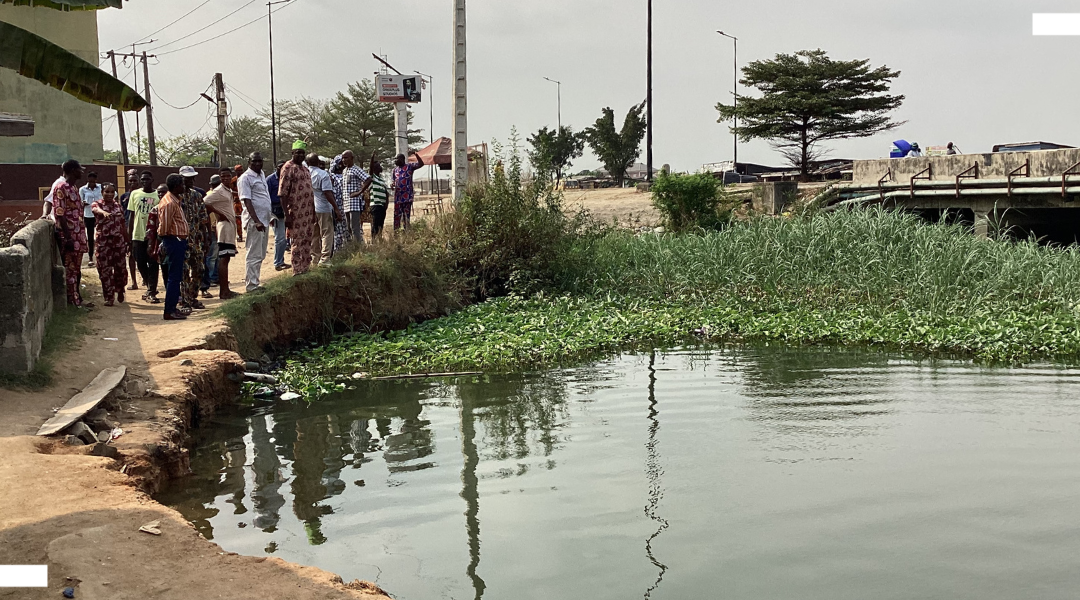
From Margins to Models: Co-creating climate resilience in Lagos community
Jun 27, 2025
“From Margins to Models” – a new ACRC action research project being rolled out in the vulnerable coastal informal settlement of Ajegunle Ikorodu, Lagos – seeks to unlock the potential of communities to enhance climate resilience.

Urban economics in action: Addressing African cities’ challenges
Jun 23, 2025
Earlier this month, our CEO Professor Diana Mitlin participated at the 9th Urbanization and Development Conference, organised by the World Bank and the International Growth Centre in Cape Town.
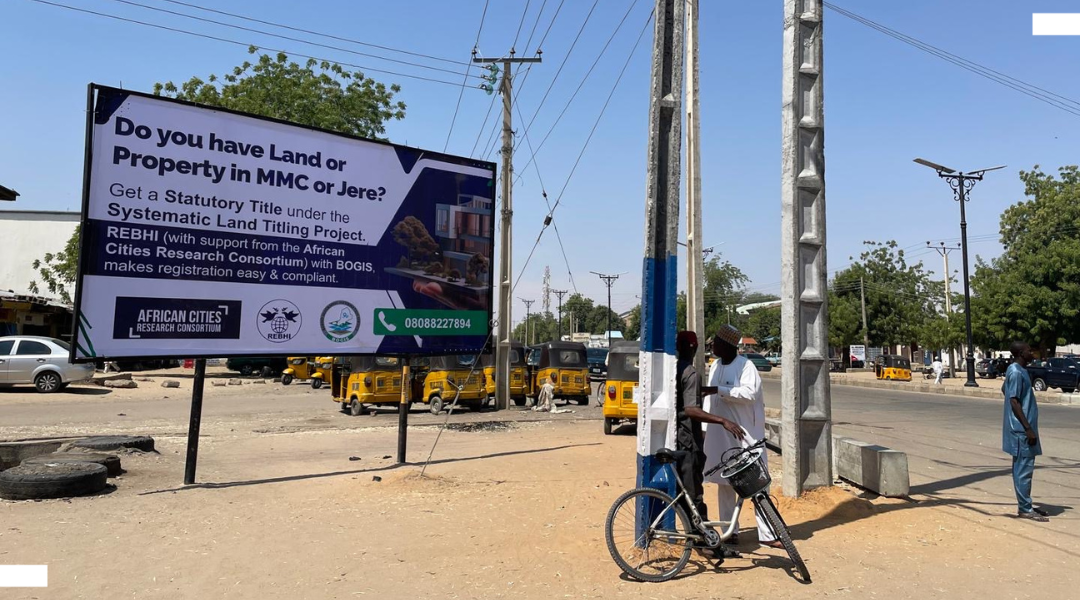
Land in her name: Legal titles transforming the lives of women in Nigeria’s Borno State
Jun 17, 2025
Through the Systematic Land Titling Project, women across informal settlements in Maiduguri are now registering their land – and receiving statutory rights in their own names.
